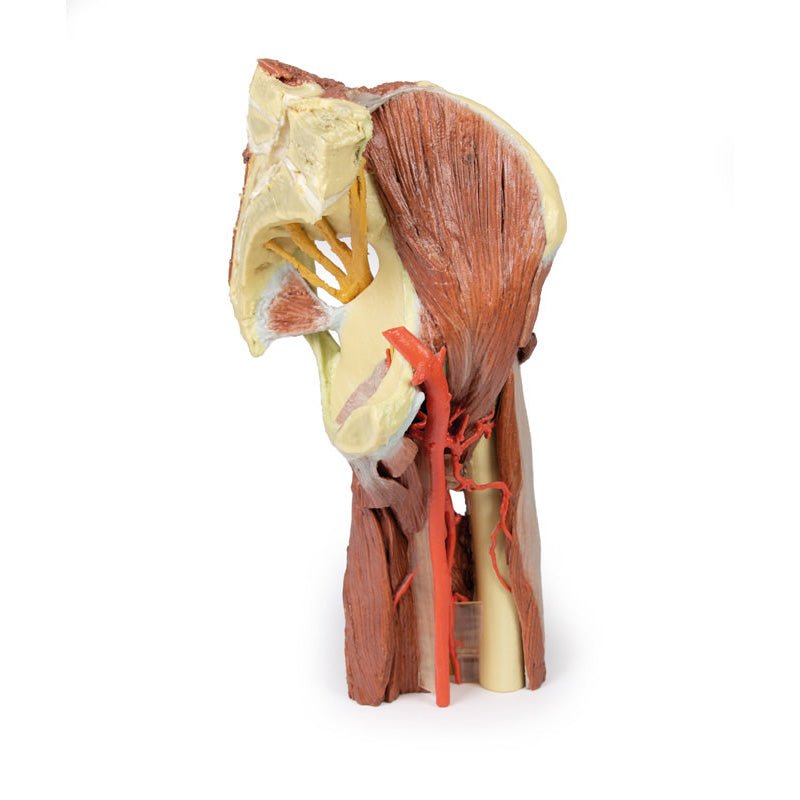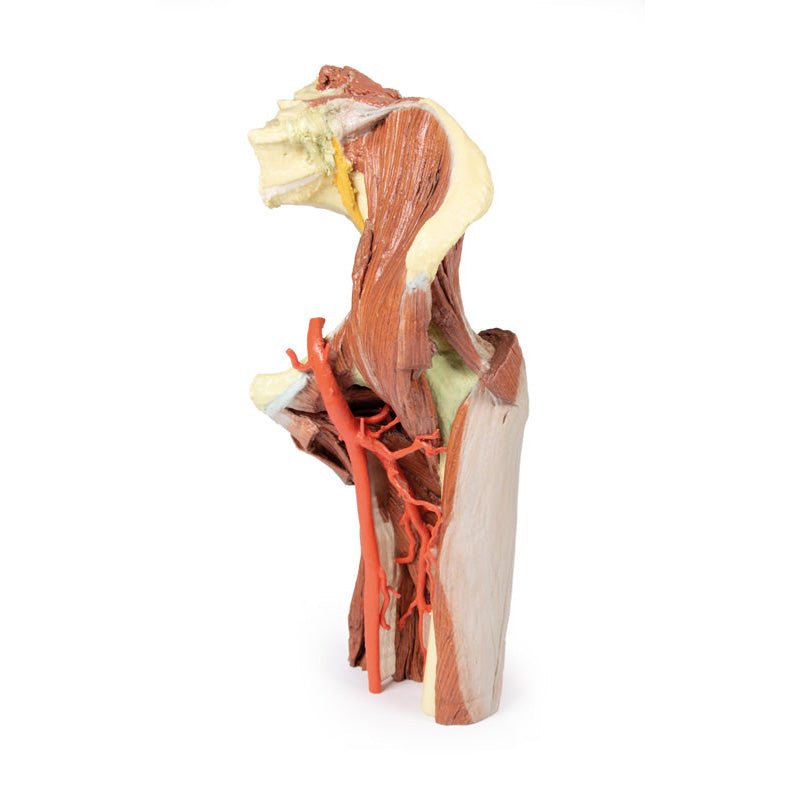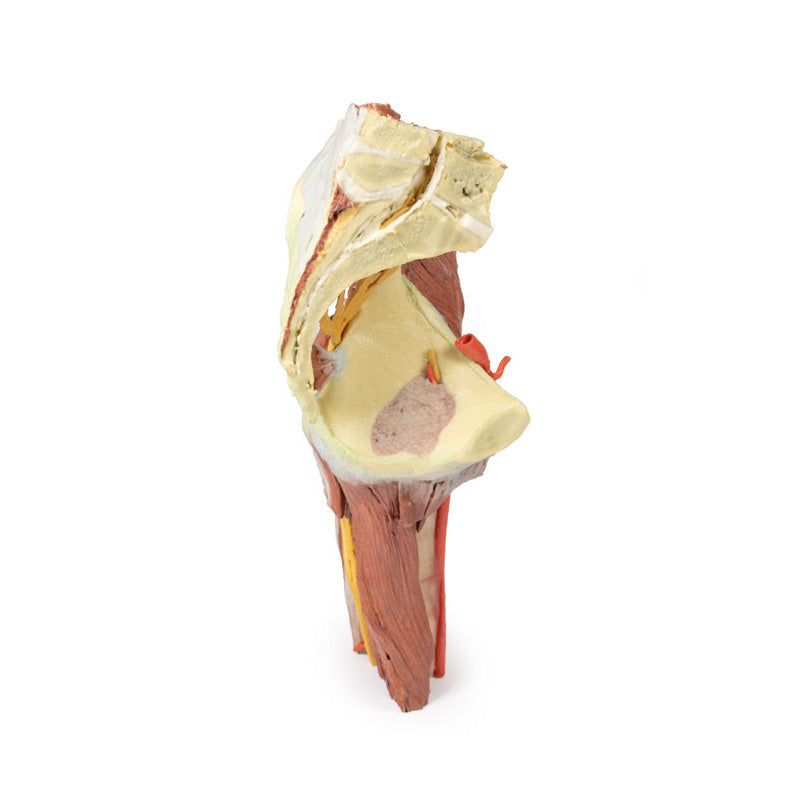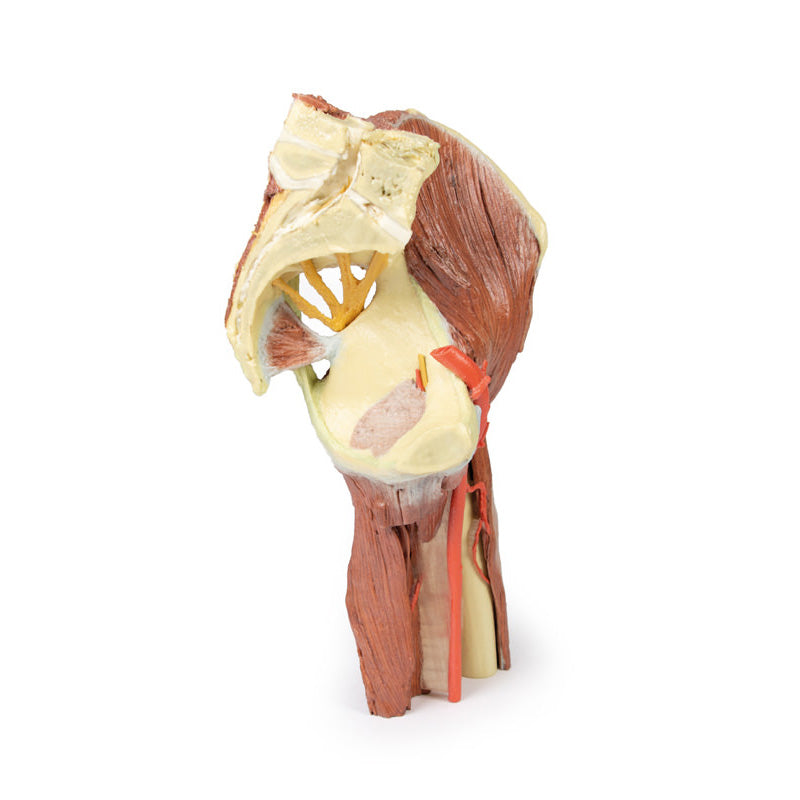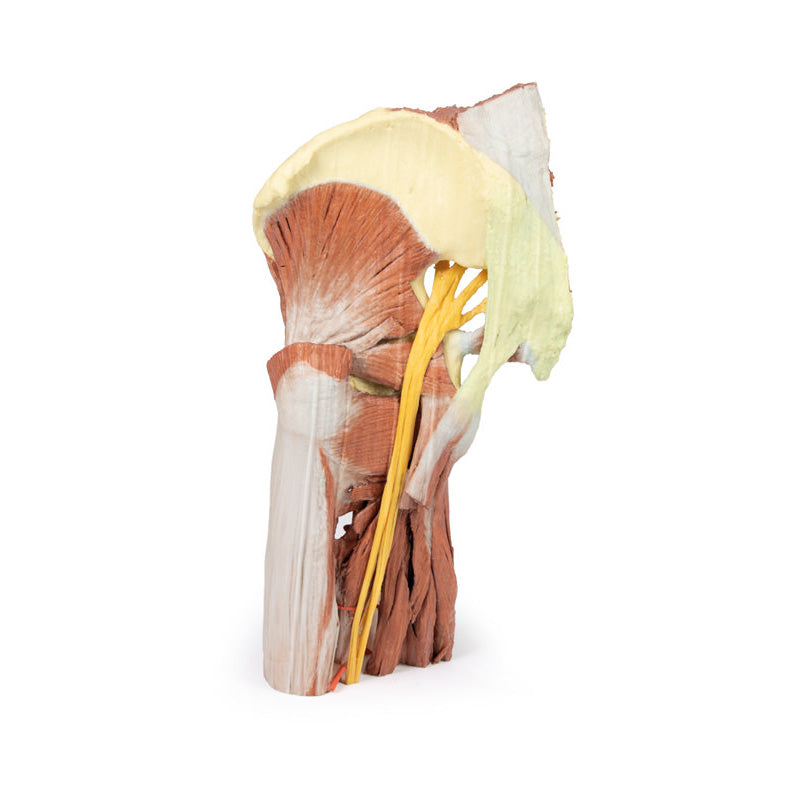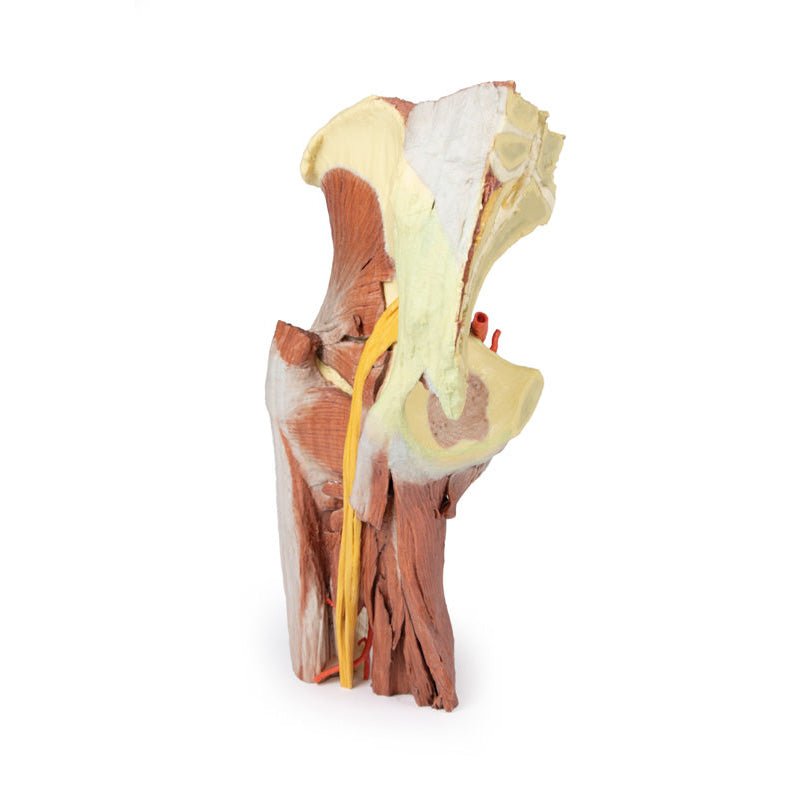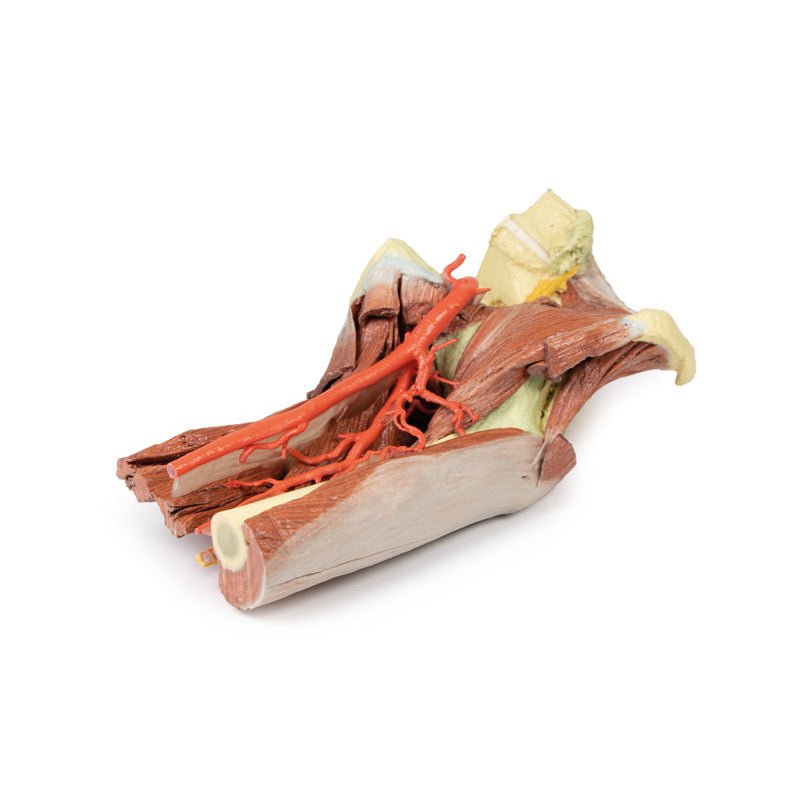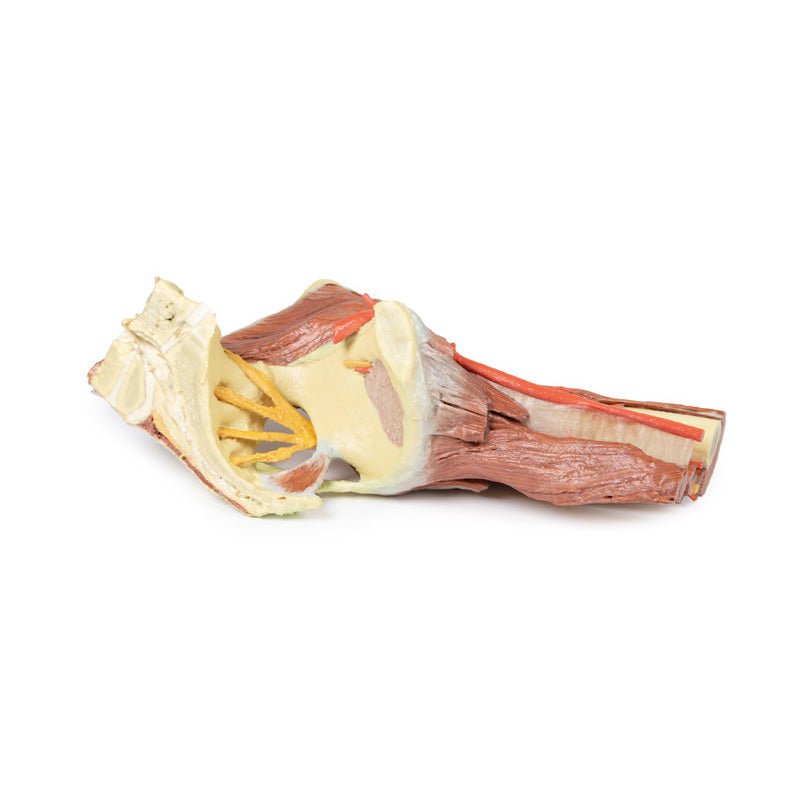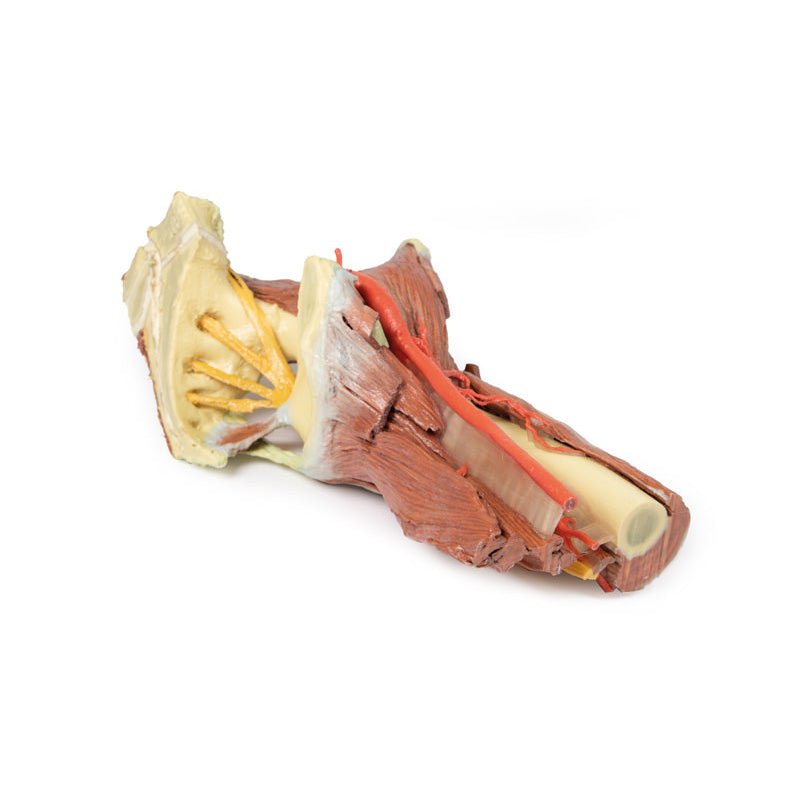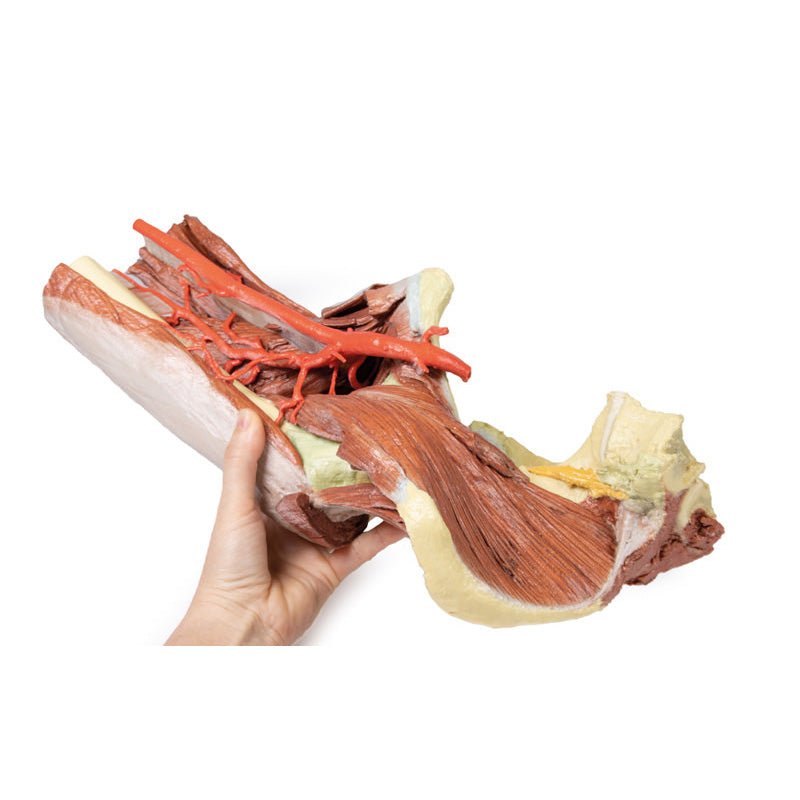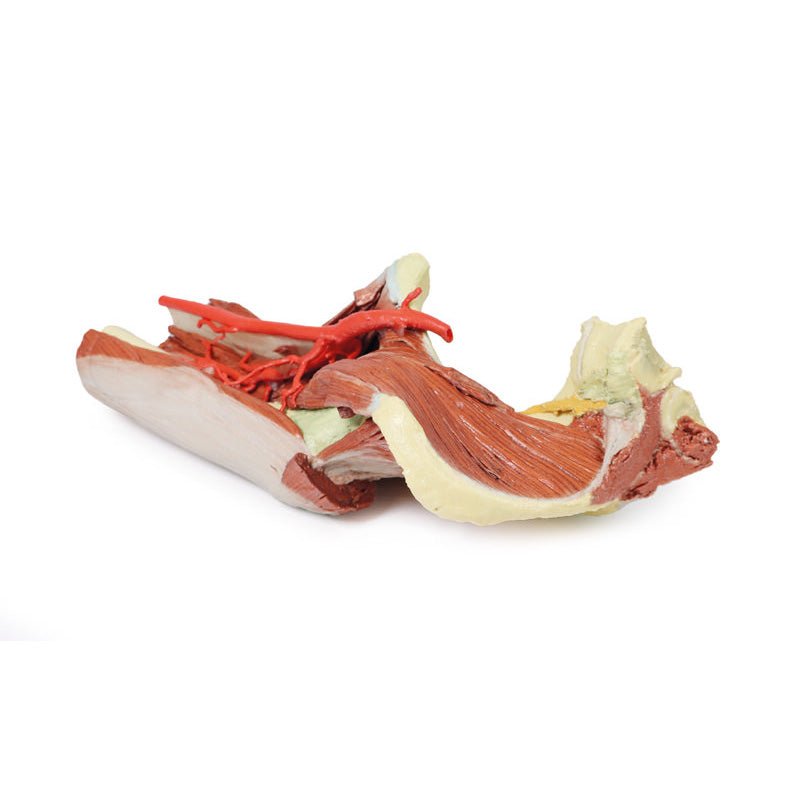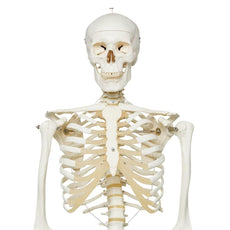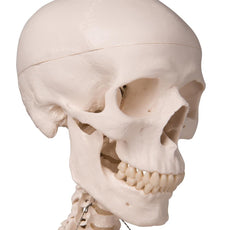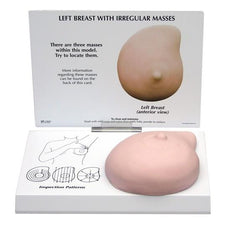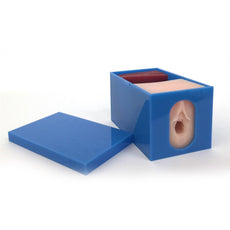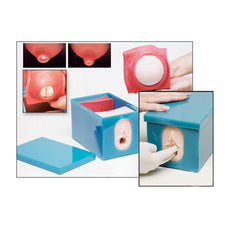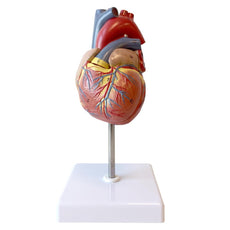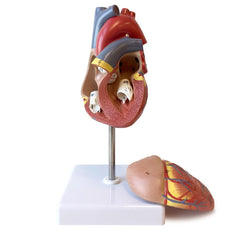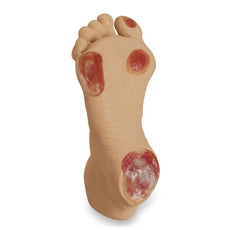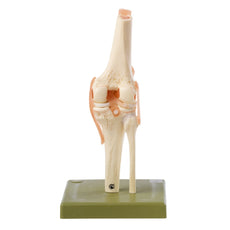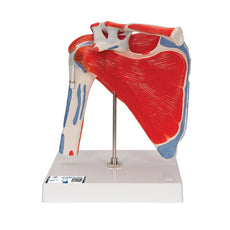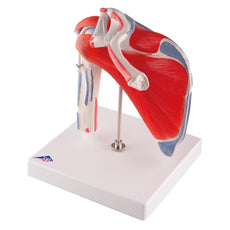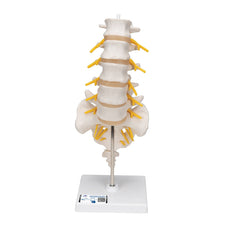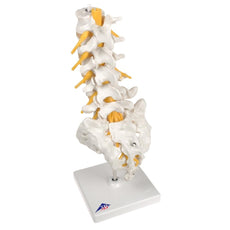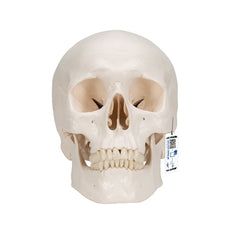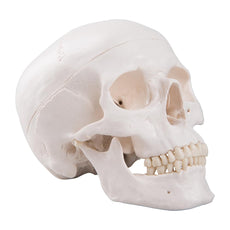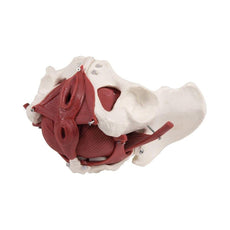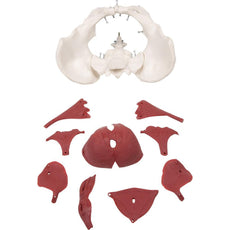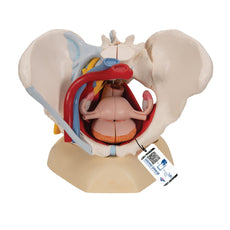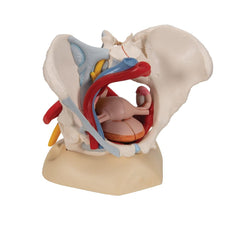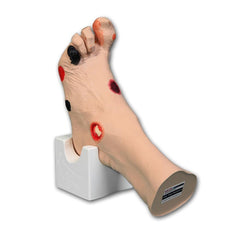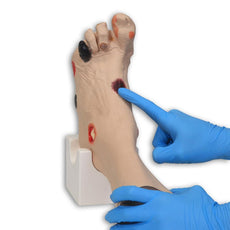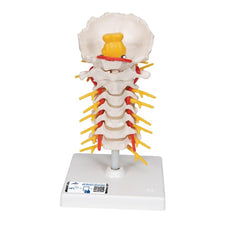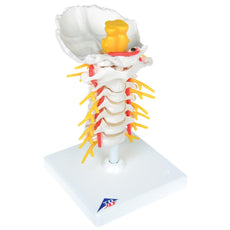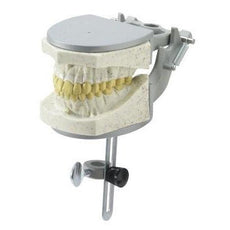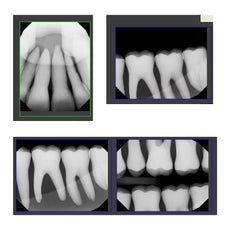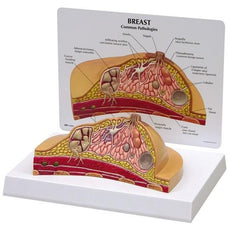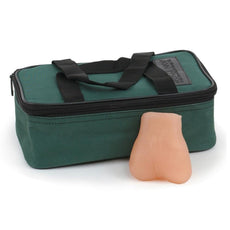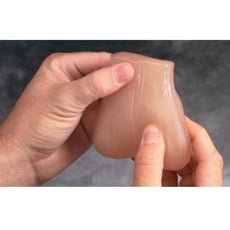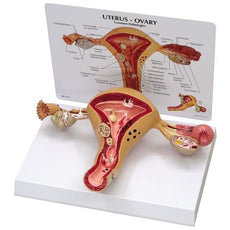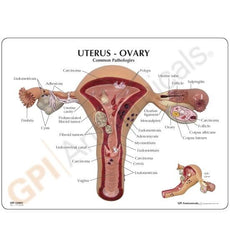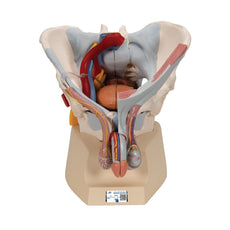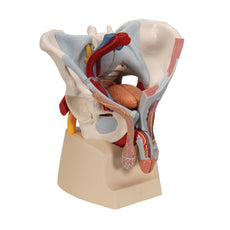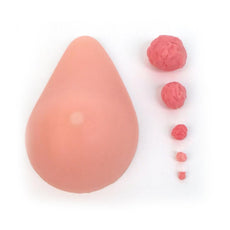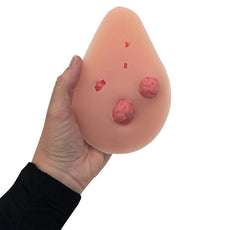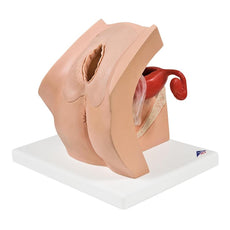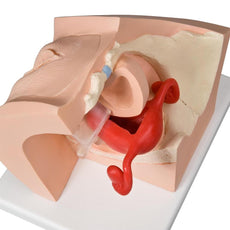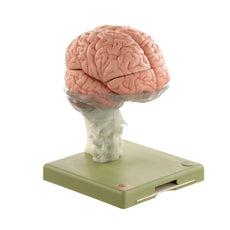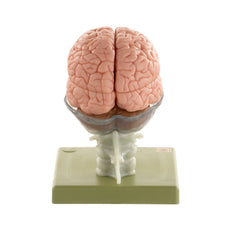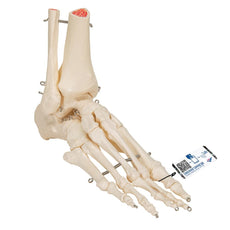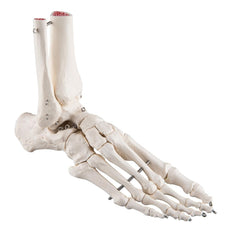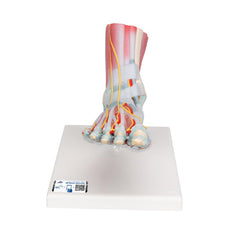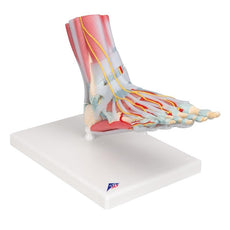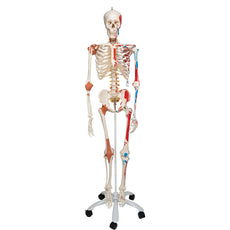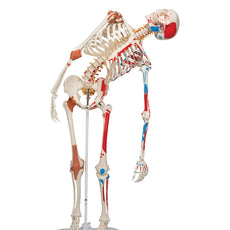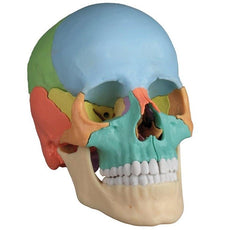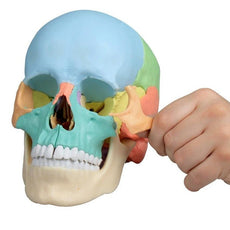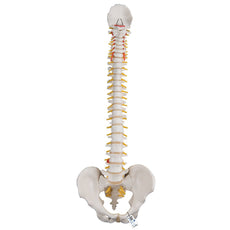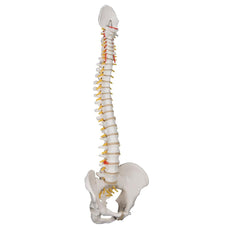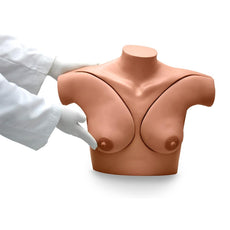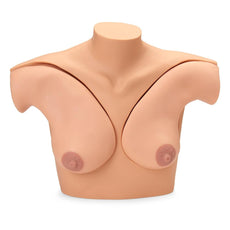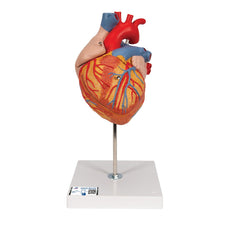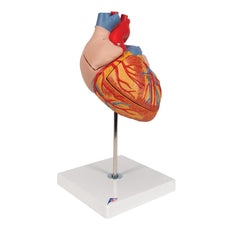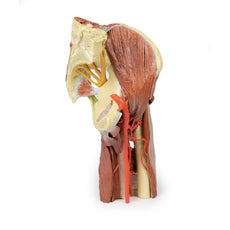Your shopping cart is empty.
3D Printed Lower Limb - deep dissection of a left pelvis and thigh
Just lateral to the lumbosacral trunk in the pelvis are the iliacus and (partial) psoas muscles, as well as the proximal portion of the rectus femoris. The femoral artery is preserved as it crosses the superior pubic ramus, giving rise to the superficial circumflex iliac and superficial epigastric arteries as they enter the proximal thigh. As the femoral artery crosses through the femoral triangle, the medial and lateral circumflex femoral arteries arise and are distributed through the medial and anterior compartment; including several branches entering the preserved vastus lateralis muscle. The profunda femoris (deep artery of the thigh) also arises proximally and descends giving off perforating branches to the posterior thigh muscles. The removal of the anterior and posterior thigh muscles provides a view of the femoral artery passing across the superficial surface of the adductor muscles and exiting the femoral triangle. The obturator externus muscle also passes from the anterior surface of the obturator membrane towards the trochanteric fossa of the greater trochanter.
Download Handling Guidelines for 3D Printed Models
GTSimulators by Global Technologies
Erler Zimmer Authorized Dealer

10.0 lb
🎄 HOLIDAY SAVINGS - Ends Dec 31 🎄
Discount has been automatically applied for this item.
3D Printed Lower Limb - deep dissection of a left pelvis and thigh
Item # MP1813
$3,141.00
$3,490.00
You save $349.00
Need an estimate?
Click Add To Quote

Features & Specifications
-
by
A trusted GT partner -
FREE Shipping
U.S. Contiguous States Only -
3D Printed Model
from a real specimen -
Gov't pricing
Available upon request
Frequently Bought Together
3D Printed Lower Limb - deep dissection of a left pelvis and thigh
This 3D printed specimen presents a deep dissection of a left pelvis and thigh to show the course of the femoral artery and sciatic nerve from their proximal origins to the midshaft of the femur. Proximally, the pelvis has been sectioned along the mid-sagittal plane and the pelvic viscera are removed. In the pelvis the coccygeus muscle spans between the sacrum and iliac spine and the obturator artery and nerve entering the obturator canal superior to the obturator membrane. The lumbosacral trunk is visible descending to join the S1-S3 ventral rami to form the sciatic nerve. The nerve exits the pelvis via the greater sciatic foramen (defined by the preserved sacrotuberous and sacrospinous ligaments) and passes superficial to the preserved gluteus minimus, piriformis, obturator internus, superior and inferior gemellus, and quadratus femoris muscles. The posterior compartment muscles of the thigh have been dissected to demonstrate the course of the sciatic (and constituent tibial and common peroneal components) as it descends towards the popliteal fossa.Just lateral to the lumbosacral trunk in the pelvis are the iliacus and (partial) psoas muscles, as well as the proximal portion of the rectus femoris. The femoral artery is preserved as it crosses the superior pubic ramus, giving rise to the superficial circumflex iliac and superficial epigastric arteries as they enter the proximal thigh. As the femoral artery crosses through the femoral triangle, the medial and lateral circumflex femoral arteries arise and are distributed through the medial and anterior compartment; including several branches entering the preserved vastus lateralis muscle. The profunda femoris (deep artery of the thigh) also arises proximally and descends giving off perforating branches to the posterior thigh muscles. The removal of the anterior and posterior thigh muscles provides a view of the femoral artery passing across the superficial surface of the adductor muscles and exiting the femoral triangle. The obturator externus muscle also passes from the anterior surface of the obturator membrane towards the trochanteric fossa of the greater trochanter.
Download Handling Guidelines for 3D Printed Models
GTSimulators by Global Technologies
Erler Zimmer Authorized Dealer
These items normal warranty are two years, however the warranty doesn’t cover “wear and tear”. The manufacturer does have 100% quality control on these models.
The models are very detailed and delicate. With normal production machines you cannot realize such details like shown in these models.
The printer used is a color-plastic printer. This is the most suitable printer for these models.
The plastic material is already the best and most suitable material for these prints. (The other option would be a kind of gypsum, but this is way more fragile. You even cannot get them out of the printer without breaking them).The huge advantage of the prints is that they are very realistic as the data is coming from real human specimen. Nothing is shaped or stylized.
The users have to handle these prints with utmost care. They are not made for touching or bending any thin nerves, arteries, vessels etc. The 3D printed models should sit on a table and just rotated at the table.
The models are very detailed and delicate. With normal production machines you cannot realize such details like shown in these models.
The printer used is a color-plastic printer. This is the most suitable printer for these models.
The plastic material is already the best and most suitable material for these prints. (The other option would be a kind of gypsum, but this is way more fragile. You even cannot get them out of the printer without breaking them).The huge advantage of the prints is that they are very realistic as the data is coming from real human specimen. Nothing is shaped or stylized.
The users have to handle these prints with utmost care. They are not made for touching or bending any thin nerves, arteries, vessels etc. The 3D printed models should sit on a table and just rotated at the table.

by — Item # MP1813
3D Printed Lower Limb - deep dissection of a left pelvis and thigh
$3,141.00
$3,490.00
Add to Cart
Add to Quote



